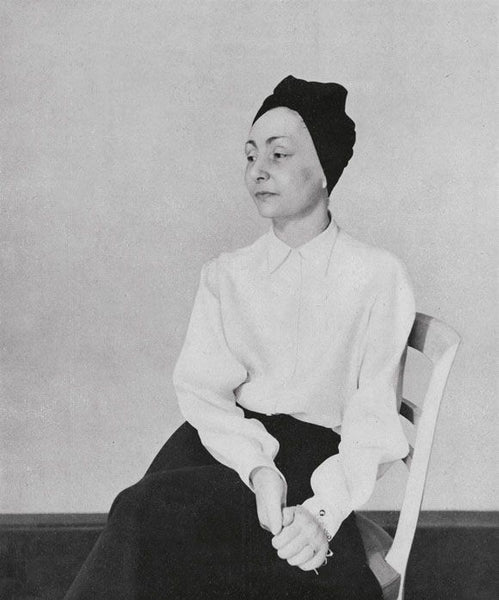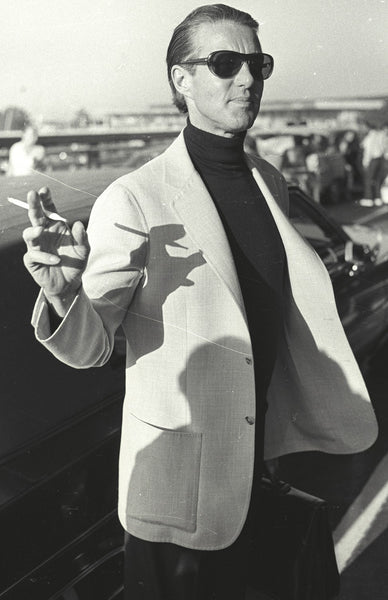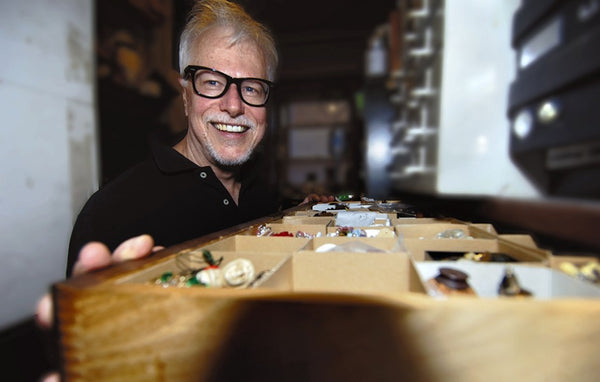Designer Spotlight: Christian Dior

Christian Dior was born in Granville, France in 1905, later moving to Paris in 1910. After he finished his schooling, Dior’s father, a wealthy fertilizer manufacturer, bought his son a gallery. Although the gallery played host to pieces by Pablo Picasso, Jean Cocteau, Georges Braque, and Max Jacob, it was shuttered in 1931. The Great Depression, deaths in the family, and the collapse of Dior’s father’s business all had a hand in the closing. The closing of the gallery was devastating to Dior. The young designer was now sleeping on his friends' floors. A sharp contrast to his bourgeoisie upbringing. At one point he developed tuberculosis due to his poor diet and general quality of life.
Dior ultimately supported himself through the sales of his illustrations, eventually leading him to work with the designer Robert Piquet. While a brilliant designer in his own right, Piquet is now best known for incubating such talents as Pierre Balmain, Marc Bohan, James Galanos, and Hubert de Givenchy.
Dior served in the French military from 1940-1942, after which he went to work for Lucien Lelong. Dior worked alongside Balmain as the atelier’s two primary designers. During the German occupation of France in World War II, many Paris ateliers dressed the wives and mistresses of Nazi officers and Vichy officials. Jean Lanvin, Nina Ricci, Madame Gres, and Lucien Lelong were among those who kept their houses open. While certainly controversial, the designers who stayed open considered themselves to upholding the fashion industry for the sake of art and finances.
While Dior was working for Lelong, his sister, Catherine, was working as an operant in the French Resistance. She was liberated from the Ravensbrück concentration camp in 1945, and two years later, in 1947, Dior named his first fragrance “Miss Dior” in her honor.
Dior continued to receive offers from fashion houses, however he wanted to build his own empire. The success of Balmain’s 1945 launch emboldened Dior, and in December of 1946, he quietly opened his fashion house. For two months Dior worked on his first collection. On February 12th he stunned the world with his “New Look.” The collection was a fresh return to opulence, with sculpted lines, full skirts, wasp waists, and yards and yards of silk.
Orders came from far and wide, Katherine Hepburn, Rita Hayworth, and Margot Fonteyn were among those who sported the feminine dresses. Dignitaries, songstresses, actresses, women of all sorts of celebrity wanted the “New Look” which was adored internationally, helping restore Paris as the world’s fashion capital.
In 1948 Dior opened his first stateside ready to wear boutique in New York, expanding his reach and further popularizing himself with the American crowd.
Dior understood the importance of an impeccably styled outfit, and along with his business partner Jacques Rouët, he licensed his name out to furriers, cobblers, jewelers, and other creators of luxury goods. One could now dress themselves from head to toe in Dior!
While this licensing move was seen as anathema by the rigid French Chamber of Couture, many more of the Chamber’s fashion houses soon followed in Door’s footsteps.
Dior passed away from a heart attack in 1957, leaving his successor, 21 year old Yves Saint Laurent in control of the Maison. Saint Laurent was conscripted in 1960, and replaced by Marc Bohan who championed a sleeker Dior look that maintained the elegance the house was known for. Bohan was replaced by Gianfranco Ferre (1989-1997) and he was then replaced by John Galliano (1997-2011), who was then succeeded by Raf Simmons in 2012.
Although he was a late bloomer, Dior was confident and exacting. He brought elegance back to Paris and encouraged his audience to dream again. Dior’s elite upbringing and a youth spent with acclaimed artists informed the elegant, aristocratic nature of his designs, and that impression of power and celebrity drew people to his couture.
Also in Adore MRS. Couture

Designer Spotlight: Madame Gres

Designer Spotlight: Roy Halston Frowick
Halston was thrown into the limelight when Jacqueline Kennedy wore his pillbox hat to John F. Kennedy’s inauguration. Soon Halston expanded into women’s wear, creating both couture and ready-to-wear fashion catering to the fashionable and elite jet set. Halston also accepted the honor of designing the 1976 US Olympic team uniforms, redesigned Braniff Airlines’ uniforms in 1977, and created uniforms for the New York Police Department and the Girl Scouts in 1978.
Halston was innovative, using slinky knit material and ultrasuedes, and introducing a halter dress design that elongated a wearer’s silhouette. He pioneered the sensual and soft draped looks associated with disco and his beloved Studio 54.

